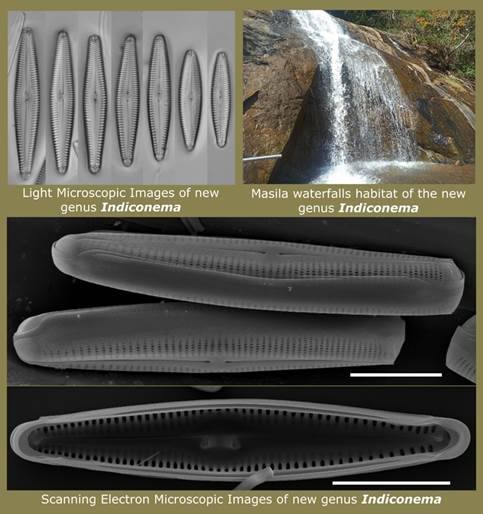New Genus of Diatom Discovered in Eastern Ghats Rivers Enhances Understanding of India's Unique Biodiversity
Named Indiconema to reflect its limited distribution within India, this genus stands out due to unique valve symmetry and other distinctive features compared to its relatives.

- Country:
- India
Researchers from the Agharkar Research Institute (ARI), Pune, have identified a new genus of diatom within the Gomphonemoid group, discovered in the pristine rivers of the Eastern Ghats. Named Indiconema to reflect its limited distribution within India, this genus stands out due to unique valve symmetry and other distinctive features compared to its relatives.
Diatoms, microscopic algae crucial to global oxygen production (contributing 25% of global oxygen), serve as foundational organisms in aquatic ecosystems. They are sensitive indicators of water quality, making them essential for monitoring aquatic health.
India boasts a rich diatom biodiversity, with approximately 30% of its 6,500 diatom taxa being endemic. The varied biogeographic zones, from freshwater to marine environments and from sea level to high mountains, support diverse habitats that nurture unique diatom species. The Eastern and Western Ghats, in particular, host distinct ecosystems influenced by monsoonal patterns, shaping diatom distribution across these regions.
Indiconema, described in the journal Phycologia, exhibits notable morphological characteristics such as pore fields at both the head and foot poles, distinguishing it from related genera. This discovery underscores India's role in diatom biogeography and highlights parallels with endemic-rich groups observed in other geographic regions.
The study, supported by the Science and Engineering Research Board (SERB), emphasizes ongoing research efforts in understanding diatom diversity and their ecological significance within India's dynamic landscapes.
For more detailed insights into the discovery of Indiconema and its implications, refer to the publication in Phycologia or visit the Agharkar Research Institute's official website.
- READ MORE ON:
- Agharkar Research Institute
- Indiconema
- diatom










